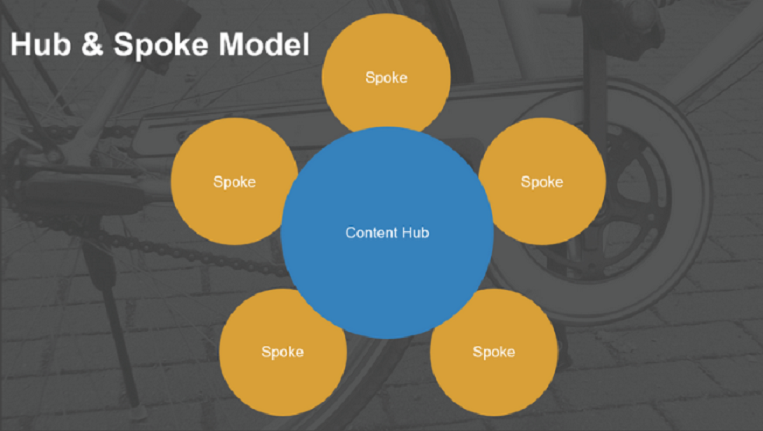
Developing successful digital marketing strategies is often about lessons learned. Content marketing as a digital marketing strategy has really taken off in the past 4-5 years. Prior to that, you could game the search engines by stuffing pages with keywords, creating backlinks in networks, and other tactics that were about manipulation rather than about helping and educating your potential customer. The ongoing, rolling updates from Google including the Panda, Penguin and Hummingbird have virtually eliminated the ability to game the system while ensuring that sites with great content will rank. In fact, if you’ve been focusing on SEO, you already know this. You know that SEO means “search engine optimization,” not “search engine gaming,” and that content marketing is the new SEO.
So, with the sophistication of the search algorithms and the way users search today, you have to publish authoritative content in order to rank well, capture your audience, and meet them with answers to their questions in each segment of their buyer’s journey. We have learned the old traditional marketing strategy of interrupting your potential buyer or trying to game the system has passed.
If you’re serious about growing traffic to your site and becoming a thought leader and authority in your space, content marketing is a must. Put yourself into the buyer’s frame of mind, because you, yourself, are a buyer too. When you want to make a decision, you look to the Internet to search for answers to your questions, to become educated on options and the variety of choices. You also want to know what your friends think and what others think about the product or service you are searching for. If you, as a business or marketer, don’t have the answers to buyer’s questions, if you’re not educating them, if you’re not having conversations through social media about their concerns, you will not be an option in their decision.
The Zero Moment of Truth
In 2012, Think Insights along with Google established the ZMOT or Zero Moment of Truth where they actually identified a brand new step in the buying process. According to their research, buyers now include a fourth step in their buying process (formerly stimulus (advertising) – buy – experience). This new fourth step is ‘consulting’ and on average buyers consult 10.4 sources before they make their buying decision.
Jim Lecinski, Google’s Vice President, Americas Customer Solutions said it best, “We saw that people are increasingly making these decisions at the Zero Moment—the precise moment when they have a need, intent or question they want answered online. These questions can be anything from “Which brand of diapers will help my baby sleep through the night?” to “What toothpaste is going to make my smile brighter?” or “What will remove crayon marks from my wood dining table?” A brand that answers these questions at just the right time scores a double win: It helps improve a consumer’s life and stands to gain a competitive advantage over brands that don’t.”
Over the past 9 years, Vertical Measures has learned a lot about how to be successful with digital marketing. We’ve seen the market shift, and quite frankly have been thought leaders in content marketing, evangelizing the concept and developing successful methodologies and strategies around it (8 Step Process).
We’ve learned many lessons and one of the most important of those is to have a plan, a strategy, a detailed roadmap to publishing content. The strategy allows us and our clients to look ahead and plan rich pieces of content in a variety of formats that are promoted and referred to in other ancillary pieces of content. We call this a Hub & Spoke model of content marketing. Certainly not a unique concept, we’ve embraced it at Vertical Measures and it’s part and parcel of our content deployment. Why? Because it works. In fact, 60% of consumers feel more positive about a company after reading custom content on its site.
The Hub and Spoke Model
Conceptually, you research, produce and publish a main piece of content, which becomes the actual hub, and then you create many spokes that relate back to that significant piece of content to support, promote and drive significant traffic to it.
The hub is published first and the spokes are published continuously for 2-3 months afterward (sometimes longer depending on the focus of the piece) in many different formats and many different channels to support the hub.
The spokes are published to drive traffic to the hub, and the hub helps drive conversions to the spokes. The hub is important because without a hub, the spokes would just be miscellaneous pieces and formats of content and not tied to any specific content marketing goals or strategy. The hub and spoke model are tied together. They need to be done in tandem, because without the spoke content promoting and distributing, the hub wouldn’t get enough traffic to be successful.
Think of this model as an image or illustration (see below). The hub is located at the center and the spokes are all connected to the hub, just like a wagon wheel. As the wheel rolls forward, it gains traction and moves traffic along the spokes directly to the hub. In distributed computing, it’s known as a star network.
Not to be confused with a blog section on a website, the hub part of the model we are describing is a free guide, user guide, buying guide, how to guide, white paper, case study, a buyers comparison (versus) guide, a sophisticated, animated infographic, a high level video or webinar, etc. The commonality of these content pieces is their depth and breadth. The content is rich and high quality. It is a piece of content that a user would be happy to trade their email address for. The hub content should reside behind a lead capture form. By capturing an email address, marketers can start to lead-nurture and develop a deeper relationship with this new contact.
The spokes can be a series of blog posts related to the hub (which include a link or call-to-action to download the hub content), press release announcing the guide, tweets, Facebook posts, infographics, videos, native advertising, paid promotions, webinars relating back to the guide or other rich piece of content, etc. Often times we’ll actually take a portion of the hub content, reformat and re-purpose it making the most out of our time investment in the project.
The spoke content reaches back to revive the hub content and extends forward to create, promote and distribute the new content. You can continually revive this hub content because it is generally ‘evergreen’ and only needs to be refreshed from time to time.
Here is a list of spoke content examples. What would you add to it?
- A series of blog posts.
- A series of interviews/videos
- A SlideShare presentation
- A motion video
- An infographic
- A series of graphics pulled from the infographic
- Syndicated articles
- Guest post(s) on other sites
- A series of Facebook posts
- A series of Tweets
- Include references in an email series
For more content type examples, check out Tom Pisselo’s post where he writes about ‘content leverage’…using every piece of content in multiple ways and formats in order to get the highest return on investment (ROI) from every piece of content.
Read more: Build Your Content Marketing Around a Hub and Spoke Model














